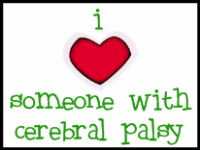
Welcome to Friday Facts! here on the Knowledge Safari blog. Each Friday we aim to shine the spotlight on various segments of special needs in order to raise awareness and provide information. Today we focus on Diabetes.
If you know of a specific disease/condition/syndrome that needs some attention, please let us know in the comments!
Taken from the Juvenille Diabetes Research Foundation's website:
Diabetes (medically known as diabetes mellitus) is the name given to disorders in which the body has trouble regulating its blood glucose, or blood sugar, levels. There are two major types of diabetes: type 1 diabetes and type 2 diabetes. Type 1 diabetes, also called juvenile diabetes or insulin-dependent diabetes, is a disorder of the body's immune system -- that is, its system for protecting itself from viruses, bacteria or any "foreign" substances. A third form of diabetes, called monogenic diabetes, is sometimes mistaken for type 1 diabetes.
Type 1 diabetes occurs when the body's immune system attacks and destroys certain cells in the pancreas, an organ about the size of a hand that is located behind the lower part of the stomach. These cells -- called beta cells -- are contained, along with other types of cells, within small islands of endocrine cells called the pancreatic islets. Beta cells normally produce insulin, a hormone that helps the body move the glucose contained in food into cells throughout the body, which use it for energy. But when the beta cells are destroyed, no insulin can be produced, and the glucose stays in the blood instead, where it can cause serious damage to all the organ systems of the body.
For this reason, people with type 1 diabetes must take insulin in order to stay alive. This means undergoing multiple injections daily, or having insulin delivered through an insulin pump, and testing their blood sugar by pricking their fingers for blood six or more times a day. People with diabetes must also carefully balance their food intake and their exercise to regulate their blood sugar levels, in an attempt to avoid hypoglycemic (low blood sugar) and hyperglycemic (high blood sugar) reactions, which can be life threatening.
The warning signs of type 1 diabetes include extreme thirst; frequent urination; drowsiness or lethargy; sugar in urine; sudden vision changes; increased appetite; sudden weight loss; fruity, sweet, or wine-like odor on breath; heavy, labored breathing; stupor; and unconsciousness.
Type 1 diabetes is generally diagnosed in children, teenagers, or young adults. Scientists do not yet know exactly what causes type 1 diabetes, but they believe that autoimmune, genetic, and environmental factors are involved.
Type 1 diabetes is generally diagnosed in children, teenagers, or young adults. Scientists do not yet know exactly what causes type 1 diabetes, but they believe that autoimmune, genetic, and environmental factors are involved.































No comments:
Post a Comment